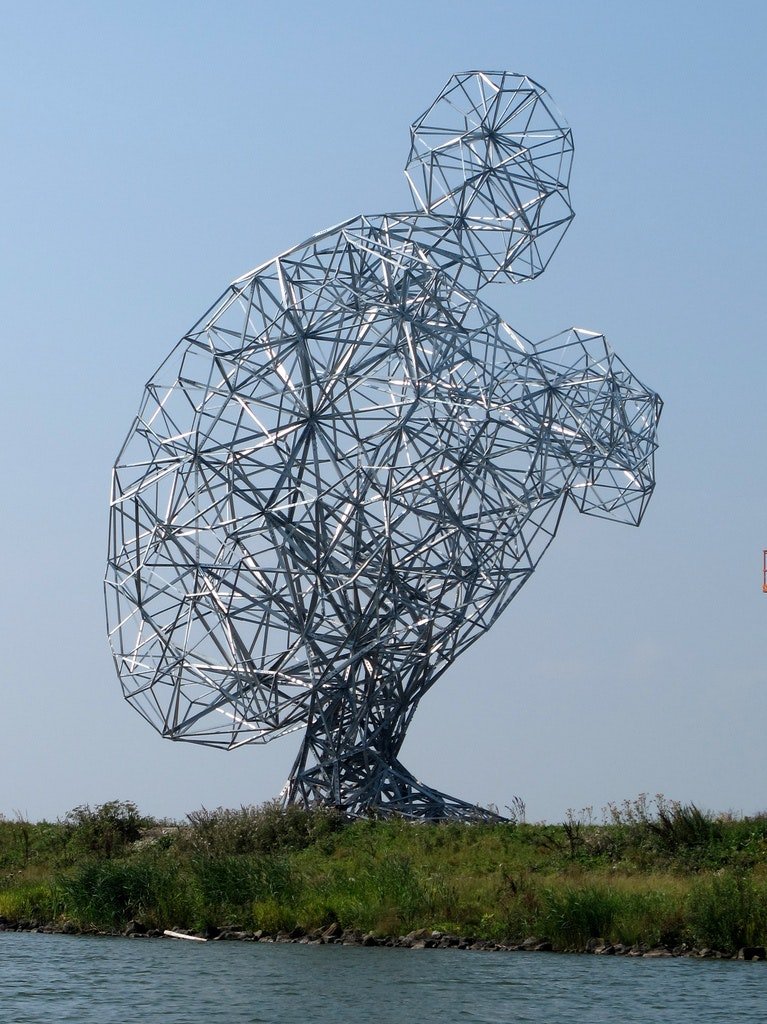S.A.V.E.
S.A.V.E is a heuristic and filter that one can deploy both for business and personal interactions.
S = Solutions
A = Accessible
V = Value(s)
E = Experience
Solutions
People and potential Clients look for solutions, but companies often focus on products, services, and processes.
This is understandable since the purpose of an organization is to provide products and services and often the way to differentiate oneself is by focusing on the special inputs (e.g., data), ingredients (e.g., saffron), processes (e.g., “bespoke”, “hand curdled”), approaches (e.g., some sort of diagram of how the company comes up with results) or organizational structure (e.g., “our special way of working and organizational structure that is silo-less, client focused and efficient”)
All of this is well and good and often necessary but never sufficient.
Because what the buyer is asking is “can you show me some cool shit instead of showing me how your colon works?”
Ask how much of your selling efforts are about broadcasting a colonoscopy on your company’s methods, tactics, history, purpose, and strategy and how much is simply “here is an amazing solution, idea, innovation”.
Accessible
Today, most people are constrained for time and want things fast, friction-free and optimized for their personal situation.
Simplicity in understanding what is available.
Convenience in buying.
Flexibility in delivery and returns.
Optionality in payment terms.
Are our solutions easy to buy and ourselves easy to deal with?
For an organization this means being easily discoverable on all major platforms. Using language that is simple and free of buzz word bingo and jingo lingo. Being available to purchase or interact with across all channels and offering varied methods of delivery and payment.
People will not adapt to the way of the company, but the company needs to re-tool its spine to adapt to the way of the people.
Today when someone watches a video on Tik-Tok and comes across a shoppable commercial which offers them the choice of picking up a product from a physical store one wonders the following:
Was the transaction above the line or below the line?
Was it about marketing since it was an ad or sales since there was a special deal at the store that was featured?
Was it online since it began there or offline since it ended there?
Was it mobile since it was a phone, social since it was Tik-Tok or was it was e-commerce?
The customer or consumer journeys (and there are many and no longer one) has become a mongrel mix and fusion as technology like hydrochloric acid has dissolved the definitions, containers, and organizational structures of the past.
In many organizations now marketing and sales, regular commerce and e-commerce, and a lot more need to be re-thought around making the firm and its solutions accessible.
Value(s)
Value is always a key since in addition to time, money is often a constraint for most.
This often requires competitive pricing but is not necessarily about selling out with the lowest price.
Ideally one finds a way to price the outcome versus the input.
Buying cheap pigs could lead to poisoned hot dogs.
Smart archers use fewer arrows and can get to the bullseye of solution faster, so quality has great ROI but often one must find ways to illustrate and numerate quality.
Some approaches include truly differentiated solutions or people where the result or experience are so clearly superior that premiums are justifiable.
It is important to note that Apple, LVMH, Disney and many others do not differentiate on price but value.
In addition, today like never before the values of a company or person matters.
Purpose.
A stance on ESG.
Approach to DEI.
Care and growth of employees and community.
All these now become ways to signal value and values.
Experience.
In the end people remember the experience and pay for the experience.
And much of business and marketing is creating seamless experiences or rectifying and correcting lapses in the experience.
Experiences have always been key but in the next few years as Web 3.0/The Third Connected Age scales with increasingly open, decentralized and composable systems, AR/VR interfaces, new organizational structures (DAO’s) and new currencies of trust and monetization (Blockchain driven tokens) it is likely to be the KEY differentiator.
One reason is that brands such as packaged goods which may have struggled to create experiences are likely to be unchained and unleashed using the next generation Web 3.0 tool sets (metaverse anyone?) and create truly valuable CRM programs using tokens that deliver value and unlock opportunities.
A creative age for building experiences is upon us.
The Question to Ask.
Is your company offering solutions that are accessible and deliver value while enabling experiences?
Or is it selling poorly differentiated products and services in ways that are friction-filled for the buyer at cheap prices with a so-so quality of interaction.
Most companies are somewhere in between but using the S.A.V.E filter and focus efforts.
But this also works for each of us as individuals.
Do we look for solutions or fester and brood over problems?
Are we easy to understand and deal with? Are we easy to get a meeting with or communicate with? Do we speak English and make things accessible to understand?
What and who do we value? Are our motivations and methods transparent? Can we get people to trust us?
Do people have positive experiences with us. Do we leave people with clarity, energy and inspiration or do we collapse the mood of the room?
S.A.V.E
Solutions. Accessibility. Value(s). Experiences.
Photographs by Rishad Tobaccowala.
Generosity.
Sculpture by Antony Gormley.
What is generosity?
The University of Notre Dame’s Science of Generosity Initiative defines generosity as the virtue of giving good things to others freely and abundantly.
The definition is further articulated in greater depth as follows:
Generosity is a learned character trait that involves both attitude and action—entailing as a virtue both an inclination or predilection to give liberally and an actual practice of giving liberally.
Generosity also involves giving to others not simply anything in abundance but rather giving those things that are good for others. Generosity always intends to enhance the true wellbeing of those to whom it gives.
What exactly generosity gives can be various things: money, possessions, time, attention, aid, encouragement, emotional availability, and more.
Generosity, to be clear, is not identical to pure altruism, since people can be authentically generous in part for reasons that serve their own interests as well as those of others. Indeed, insofar as generosity is a virtue, to practice it for the good of others also necessarily means that doing so achieves one’s own true, long–term good as well.
The key points here are that a) generosity is more than about money, and b) being generous is usually a win-win where both sides gain.
Sculpture by Antony Gormley.
Generosity and life.
A CEO shared a story about how a poor family of immigrants stopped to help someone who had a flat tire in bad weather. After the tire was changed, the individual offered money to the family. They turned it down saying “Today it was you. Tomorrow it might be us.”
Sooner or later, everybody finds themselves needing help and depending on acts of generosity. It might be some form of aid, guidance, a person to talk to who will listen, a leg-up or sometimes gently delivered difficult to hear advice.
By being there and helping when someone is in need ensures good “Karma.”
If what goes around comes around it may make sense to send good stuff people’s way.
Sculpture by Antony Gormley.
Generosity and emotional well-being.
Several research projects have indicated that helping others has significant benefits from making your body “glow,” to reduced stress and anxiety and a longer life!
Generosity enables greater human connection, a sense of community and a higher social standing.
Importantly, generosity is not about wealth and a number of studies indicate that those less well-off tend to be more generous with their resources than those with resources often giving their time and energy and often even money from their constrained budgets.
Being more exposed to the challenges of limited resources they may be more compassionate.
Generosity, compassion, and empathy are three emotional states that are deeply inter-connected.
Sculpture by Antony Gormley.
Generosity as a strategy.
If strategy is future competitive advantage, generosity is smart for individual or company strategies.
Generosity builds good will which is both an asset and a moat.
It is an asset in that it can be tapped in the future.
It is a moat because when an individual or a company has been generous in times of trouble their employee or customer are less likely to switch to a different firm for a lower price or higher pay.
Generosity is also a key differentiator in that usually when a person or firm needs help there are few people willing to help someone out of power or in trouble. Those individuals and brands who do help stand out and their showing up and helping when others are not burns into the emotional and mental memory of the recipient.
Emotional connections are harder to sever or replace than financial connections.
Sculpture by Antony Gormley.
Generosity and modern marketing.
We are at the Dawn of a New Era of Re-invented Marketing where Brands are increasingly differentiated through experience, purpose and employee joy.
One way a brand delivers a great experience is when it surprises you with generosity.
Last week’s post Tattoo resulted in many people sharing stories of how a brand or company’s generosity made a lifelong impact.
Here is one:
“Long ago, must be 30 years ago or more, I went into Tiffany’s to purchase one cufflink.
The night before I had attended a black-tie event and one cufflink must have worked itself free (it was the solid type, and was difficult to get on and off), and I lost it off my sleeve. Just wasn't there when I got home.
I said to the counter person that I just wanted to buy one cufflink to match the other one.
She left.
She returned with the typical Tiffany's blue box with the white ribbon. "Here you go...no charge," she said.
I couldn't believe it.
You must be -- at least -- the 400th person I have told this story to.”
Brands today cannot succeed unless their employees are happy. It is the employees who after all provide the service to customers and clients. It is the employees who generate the ideas and solve the problems. It is often the employees who are most believed and can be the greatest ambassadors and advocates of a brand. Often employees are far more authentic ambassadors than a celebrity that companies give tens of millions too. Why not be generous in care, money, and attention to employees?
The CEO of the company where I spent my full-time working career recently awarded many tens of millions of dollars in bonuses to thousands and thousands of employees who were not eligible or expecting such largesse. The impact of that generosity has been very significant and builds on many other acts of generosity of care and attention through the very difficult circumstances that people have had to deal with due to the tragedy of Covid-19.
Culture is not just a place or a history but a way of being and behaving. Great cultures always have some form of generosity whether it is compensation, benefits, forgiveness of mistakes that encourage risk taking and more.
Generosity is a key to brand experiences and brand employees, but it is also a corner stone of brands purpose driven marketing. Smart companies recognize that purpose ensures not just attraction and retention of talent but also that ESG, DEI and other initiatives truly help the company economically.
Generously helping community, environment and others helps the brand.
Stake-holder capitalism usually helps stockholders when balanced and managed well.
Sculpture by Antony Gormley.
Be generous.
Generosity is aligned with life and happiness.
It is strategic and a key to the future of marketing.
It scales by helping you build a reputation.
Talent wants to collaborate with talent that gives versus talent that takes,
As we move to the Third Connected Age of the Internet with open web and DAO’s (Decentralized Autonomous Organizations) generosity will be a key edge and signal that attracts collaborators and unlocks opportunities.
Being generous reminds us that a zero-sum, transactional, closed mindset makes little sense in a world driven by abundance, relationships, and openness.
And it makes us feel big regardless of how small or junior or resource constrained we might be.
Finally, it aligns with one’s self-interest because when you give you often get back much more than you gave.
The generous thrive both in the short and long run.
Tattoo!
Illustration by Gabriel Moreno
The official definition of “tattoo” according to Webster is:
1: a mark, figure, design, or word intentionally fixed or placed on the skin:
a) one that is indelible and created by insertion of pigment under the skin
b) one that is temporarily applied to the skin, resembles a permanent tattoo, and usually lasts for a few days to several weeks
c) one that is composed of scar tissue intentionally created by cutting, abrading, or burning the skin
2: the act of tattooing : the fact of being tattooed
But what if the real tattoos are internal and not visible for all to see?
The moments, experiences and events that mark a person’s life but leave no external sign.
The transformative moments that impact what we feel, think, and believe.
Moments that resonate for a while or forever.
These are tattoo moments.
Illustration by Gabriel Moreno
Tattoo moments and identity.
We are what we are because of what we were, where we have been and whom we have intersected with.
We are in large part what we remember.
Often, we try to define a person by demographic or behavioral criteria.
We segment by media exposure, search history, geographic location, political affiliation, product ownership and leisure activities.
The fumes of people’s digital usage and external badging are read like entrails to understand and reveal motivations.
But do they truly paint a picture of who a person is, what they care about or what makes them tick?
Data, data everywhere.
So much data under which we sink
Data, data everywhere.
Does it paint a picture or help us think?
Imagine getting all the data you could collect about a person to paint a profile.
The reality is any individual is many different people depending on the specific mood and situation and in many ways may not be knowable.
So, we will parse the data depending on what we are looking for.
As has been written “we see as we are.”
Imagine if instead you could have a conversation with that person and ask questions like these:
a) What events and or people in your past have made you who you are today? Why?
b) What beliefs have you given up on and/or what beliefs have you aligned with more strongly? Why?
c) What makes you most happy and most fearful?
We might understand someone as a person and a human versus a consumer, user, or target.
We are not a compilation of our purchases, downloads, page views or other numerical juxtapositions.
The meaning is not often in the math.
Illustration by Gabriel Moreno
Tattoo moments and marketing.
For decades marketers have found certain stages in a person’s life where they are more susceptible to messaging and marketing.
Whether it is the impending birth of a child to a physical re-location there are times where people are more open to change or to paying attention.
Marketers also recognize that there are moments of interaction where up-selling or cross-selling is likely to be more successful, such as when someone is opening an account or when one is about to pay for items in one’s real or digital shopping cart.
Basically, marketers look for moments of greatest attention and interest.
The challenge is that everybody knows these rituals and some combination of high costs and fees to show up at these moments or a certain weariness and understanding by people of what is happening, makes these less differentiable.
If instead of thinking only about where someone is on a customer/purchase journey we think about where we can surprise them positively the most, or turn a negative to a positive, we find compelling tattoo moments.
For instance, if we want to get people to speak well about our product or service instead of advertising to them or desperately try to get likes or influencer mentions, why not give them a sample of the product for free? Why not re-allocate a portion of the communication budget to enhance the quality of the product or service which will then speak for itself and get its satisfied users to speak about it. In today’s world brands are more likely to scale through people if they have a superior product or service rather than just telling people they have a superior product or service.
Imagine if you were a cable company or publisher and re-allocate the “stop them from unsubscribing” budget where you slash prices, increase channels in a bundle or enhance broadband speeds to people who are quitting, to instead reward the most loyal customers by going to them and cutting their fees and/or upgrading their services to simply say thank you.
When someone least expects an act of generosity it has a tattoo like impact.
It means they are special, and they are not being taken for granted.
So many marketers promise to “surprise and delight” customers but do we really?
Instead of a yearlong spray of pellets that have little impact why not focus spending by delivering a couple of cannon balls of high impact interactions, gifts, or surprises?
One or two “surprise and delights” might be worth a year of messaging
Less is more. The rare is meaningful. The special resonates.
Traffic in scarcity to stand out in a world of abundance, sameness, and noise.
Find and fund the tattoo moments by asking “what can we do and where can we do something that will make someone come away different”?
Illustration by Gabriel Moreno
Tattoo Moments and Talent.
A combination of new technologies and the challenges of Covid-19 have forever changed the future of work and how talent views things.
A colleague of mine recently noted that most work could be segmented as “heads down”, “heads up” or “heads together”. “Heads down” would be tasks like reading documents, working on developing content and other primarily solo work. “Heads Up” is where we attend presentations and meetings primarily to share and gain information. “Heads together” is when we need to work together to collaborate, brainstorm, and network.
Cultures are important to companies. Connections with other people in the analog world can be important for people particularly early in the career to learn and build relationships. While much of the “heads down” and a majority of the “heads up” work can be done in a distributed and unbundled fashion, a large part of the “heads together” work can gain from in-person connections particularly early in a project or when teams are first getting together.
But the reality is that for most people the five day or even the three day a week model may be replaced by a few team interactions a quarter and many of these may happen outside the office at an off-site event, a restaurant, or a conference.
Companies are going to have far fewer opportunities to build the fabric of their cultures and managers are going to have far fewer in person opportunities to interact with their teams.
Therefore, every company must re-think how to manage the growth and development of their talent, the fabric of their culture and the strength of human connection when there will be just a few occasions a year.
How does make these interactions count and meaningful?
A significant investment in great training to help people grow themselves is a way companies will create tattoo moments that matter.
Ensuring that managers are trained to make the most of in-person interaction and to learn to empathize with the situation of their teams (family or other pressures, need for flexibility) or enable acts of generosity and kindness that will forge emotional links between people is another area that companies should focus on.
Increasingly companies will recognize that attracting and retaining talent means sculpting moments that matter. Powerful experiences, employee joy and a diverse fear free culture can be built around a few tattoo moments.
Regardless, we can all make our mark on each day by living it italicized, bold and with an exclamation mark!
Every day we should ask what made it memorable and special and how we tried with each interaction to help someone come away different and better.
Tattoo!
Learning to Learn
Photography by Xuan-Hi Ng
Earlier this week, I was invited to speak about the Future of the Internet to nearly 800 individuals.
This included topics like Web 3.0, Metaverses, Crypto, NFT, Wallets and more.
After the presentation, I heard from quite a few attendees who in addition to finding the hour enlightening and educational queried me on how I had "figured out" and “made clear and enabling” versus “confusing and intimidating” a complex topic.
They were asking how one learns to learn.
Photography by Xuan-Hi Ng
Upgrading Our Mental Operating Systems.
My book "Restoring the Soul of Business: Staying Human in the Age of Data" includes a chapter called 'Upgrade Your Mental Operating System" which ends with these key takeaways:
1. Regardless of how senior or established employees are, they all possess the capacity for growth and relevancy in changing times.
2. Organizations need to set aside time for people's mental self-improvement. They can encourage employees to escape digital routines and engage in tasks and conversations that stretch their minds.
3. Today there are many amazing new ways of self-learning and improving of which every person can take advantage of.
The book was written before the tragedy and challenges of Covid-19 which we are still grappling with two years later. Today, in a world of unbundled and distributed work, the great resignation, the need for meaning, and a hunger for skill and personal growth to remain relevant in transforming times, these key takeaways are even more resonant.
Photography by Xuan-Hi Ng
Three things all of us can do to learn.
1.To learn we must be committed to learning and set aside time for it.
All of us should set aside an hour a day (or seven hours a week) to learn.
Understandably, when so many of us are stretched with responsibilities and job pressures and family challenges it may sound unrealistic to set aside an hour to learn.
The reality is that we do not have a choice since the world is changing so fast that a failure to upgrade our mental operating systems will sooner or later result in failure and setbacks that will cost us years because we did not find an hour a day! (Chill an hour less with Netflix, scroll a little less on the socials, watch summaries of sports games on YouTube versus watching the entire game).
We cannot outsource learning (yes people can help guide us), but we must exercise our own minds just as we cannot outsource physical exercise to someone else to keep our body healthy.
2. Build a case for the opposite of what you believe is true.
Nothing makes you think differently and truly see from a different perspective as building a case for the opposite of what you think or believe is true.
At minimum it helps you make your case better by seeing the opposite side and fixing the weak spots in your argument and sometimes you may see things differently and change your mind.
Today we really need to do this since a combination of who we spend time with, media we choose, and algorithm driven feeds that are optimized to re-enforce our convictions can lead us to lose grip with reality.
This is true for all of us but particularly for senior and powerful people who may be surrounded by sycophants or people worried about saying things that will displease the “boss”.
Sooner or later because of these filter bubbles, self-re-enforcing loops or carefully massaged and edited communications we make the mistake of believing that our flatulence smells like Chanel 5!
3.Do!
If you want to learn how to be a good writer, you cannot stop at reading great writers and books on writing. You must write and get feedback and then write again.
If you want to learn Web 3.0 reading Scott Galloway, A16Z or others are interesting and important but sooner or later you must plunge into Discord and Twitter communities, get a wallet, mint an NFT, put on an Oculus 2 or a HoloLens (if you can access one) and much more.
Only then will we realize so much of what people are promoting, boasting, fear mongering, moaning, or screaming about is utter BS and why Web 3.0 and Metaverse are not the same and one can do very well without the other! And the real sleeper here is how the wallet could change everything about identity, privacy and data ownership!
Only by doing can we learn enough to understand and lead.
Photography by Xuan-Hi Ng
Fresh perspectives. Fierce provocations. Feedback.
To ensure learning it is imperative that one have a diversity of not just faces but voices. By looking at things from different perspectives and from perspectives of different people we grow.
In addition, one needs to think provocatively and question all in going assumptions and first principles. Too many of us believe we are more limited and have less agency than we do. One does not know where the line is until one crosses it.
Finally continuous or regular feedback helps us learn. Here are some best practices on receiving and giving feedback. https://rishad.substack.com/p/on-feedback
Photography by Xuan-Hi Ng
The Journey Ahead.
The future is important because we are going to spend the rest of our lives there.
Regardless of what your news channel and your digital stream may indicate we are not all doomed, things are not all dark and the days of the past were not the halcyon days they are made out to be.
Rather, we are at the cusp of the most amazing time for humanity where a combination of all of our learning to date, breakthroughs and inter connections between technologies such as AI, Biotech, Blockchain, 5G, Robotics and a total re-think of education, finance, mobility and health care in a global world where billions of people have access to technology with “God-Like” power is going to unleash a bright future.
We can be better, and we can do better.
Even if it is just us as one single individual.
Because after all a society and a company is nothing but a collection of individuals.
Arthur Clarke the writer of 2001 a Space Odyssey is buried in Sri Lanka.
His tombstone can serve as an inspiration to us all to keep learning and growing:
“He never grew up, but never stopped growing.”
The Fractionalized Employee
Arizona Canyon photography by Ed Cooley.
Most of us need to work and it is central to our identity.
Yet, even though work is important most of us do not define ourselves solely by work. We have many other identities and responsibilities (parent, caregiver, sailor, artist…) that make us who we are or passions we wish to pursue.
To integrate and deal with the spectrum of what life brings we could work at a job with all its benefits but also constraints or be a free-lancer/independent worker with all its freedoms but uncertainties.
Today due to several forces there is the possibility of another way as we architect the future of work.
A way that benefits both the individual employee and the firm.
Arizona Canyon photography by Ed Cooley.
Three Forces
Three con-current forces are re-sculpting the nature of work and what constitutes a company in the most dramatic ways in over a century.
Technology: Over the past four decades one wave of technology after another has changed the nature of work, where it is done and when it is done.
This began with the expanded use of the personal computer in the 1980’s, the birth of the First Connected Age with the World Wide Web in 1993, cloud and mobile computing of the Second Connected Age of the 2000’s and now the coming tsunami of Web 3.0 +5G+AI and more of the Third Connected Age.
Demographics: Except for the continent of Africa most countries particularly Europe, the US, China, and Japan which account for most of the global GDP are seeing shrinking and aging populations on one hand and a new generation of talent which questions the way companies are organized and run.
Covid-19: The past two years of unbundled and distributed work has changed people’s mindsets. They are like champagne corks that once opened swell and do not fit back in the bottle. Everything is being questioned from the nature of work to the role of management.
These three forces of accelerating and enabling technology, declining work forces and new mindsets have significantly shifted the balance of power to talent versus the firm in most white-collar knowledge-based industries.
Arizona Canyon photography by Ed Cooley.
The firm is likely to endure.
Companies of various sizes will continue to exist both as key drivers of economic growth and the creators of jobs. The late Ronald Coase of the University of Chicago wrote the firm exists because external friction is greater than internal friction which means whether it is from standing behind a Brand promise, to building and bundling expertise to re-allocating capital it is easier to do it as a firm versus a swarm of individuals. As we move into the Web 3.0 world of DAO’s (Decentralized Autonomous Organizations) the nature of governance may change but some sort of firm will likely endure.
But their architecture and how they attract, retain and leverage talent will continue to morph dramatically in the next few years as both capital and labor, management and worker, and employer and talent work to find a mutually profitable win-win scenario.
Work will matter.
Despite the anti-work screeds of Reddit (which itself has imploded in a civil war of schism and re-crimination) people will need to work for a variety of reasons including income but also for identity, community and meaning.
The big shift is not going to be about working or not working but how the work is done at a particular time in an individual’s career. There will be more flexibility in how talent will work but also more flexibility in how companies can interact with the talent.
Today most companies combine three types of work forces.
A full-time employee,
A full time or part time contracted employee from another firm (e.g., Wipro or Cap Gemini)
Free-lancers (directly or via an intermediate firm)
Full-time employees are usually the backbone of any company and its culture with contracted and free-lancers being mixed in to expand expertise and manage oscillating workloads in a cost-effective manner.
We may now want to think of a fourth type of worker to reflect the forces of technology, shifting demographics and new mindsets: The Fractionalized Employee.
Arizona Canyon photography by Ed Cooley.
The Fractionalized Employee.
Imagine if one could get both the continuity and loyalty of a long-term employee with the flexibility of cost management of a part time employee and the expertise of a free-lancer and do so in a way that both grows employees and retains them in the long run.
This is the Fractionalized Employee.
Every employee in the company is given a choice to work 100%, 75% or 50% of their time. (In the US one needs to be working 50% to be eligible for health and other benefits).
They get to select this at the beginning of every year or can adjust to a different level when a life event occurs (health, birth of a child, need to take care of a parent, a passion that needs to be attended to or other life issues).
No longer does an employee have to choose between staying or going or being torn trying to do two things at one time. If they wish to try out a different type of non-competitive job (starting a gaming company –assuming they are not working at a gaming company--or being an artist or writing a book) it behooves their employer from letting them do so because retaining half or three quarters of a talented person is better than zero. As importantly these external skills or vocations will make the employee better rounded and probably more productive. And there will be cost savings from both reduced compensation but also eliminating the friction and cost of severance, re-hiring, and training.
And it will probably attract a lot of talent who may want to work 50 to 75 percent of their time.
Including the more seasoned who might only want to work half their time. As countries grapple with aging and declining populations this is one way to address this issue.
For the employee they do not have to give up an income stream, health benefits or a part of their identity to build new skills, pursue new horizons or take care of life’s events. Over the course of a career, they can dial up and down the percentage they work.
As importantly with a base revenue stream and health care they can decide how to use the percent of time they have bought back or own including building new skills or working as a free-lancer or expert with many new communities of talent. For many people free-lance work alone does not work either because of lack of health care, unstable income, or lack of connection to a community (though there are many new models of communities working to offset these issues).
The Fractionalized Employee model will allow companies to retain talent, grow talent, mix, and match talent in ways that are truly win-win.
The company gets access to cost effective talent and a program to differentiate and attract talent. It has a stronger culture than one with lots of people who do not leave or lots of continuous dependence on free-lancers.
Talent gets to retain income streams and benefits and continuity and community or work while balancing life challenges or other passions and interests.
Arizona Canyon photography by Ed Cooley.
Why the Fractionalized Employee makes sense today?
The Great Attraction listed the nine factors that make people join, stay, and thrive at a firm. They join for money, fame(recognition) and power(autonomy). They stay for values, purpose, and connections (with clients, bosses, and their colleagues). They thrive when the have freedom (flexibility), story (how the company fits into their lives versus they are fitting into the company’s life) and growth (growing themselves as people as well as skills).
Being offered the ability to work 50, 75 or 100 percent of their time enables all of these but particularly the latter three of freedom, story and growth that allows them to thrive.
And if a company is to thrive it can only do so if its employees do.
Modern technology, new mind shifts and changing demographics call for a new way that allows firms to thrive and people to grow. Smart companies, leaders and talent/HR teams should adapt their rules, structures, and ways of operating to enable the fractionalized employee.






























